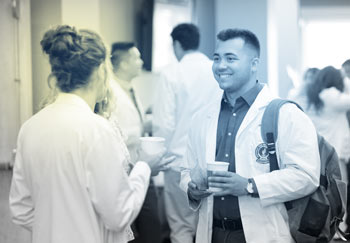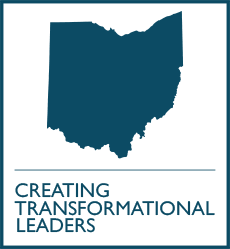College of Medicine > Medical Education > Faculty Development > Clinical Teaching Resources
 As a leader in medical education, NEOMED is committed to providing high-quality training and support for clinical educators. This page provides in brief a variety of teaching tools, including best practices in clinical education, teaching videos and case-based learning resources.
As a leader in medical education, NEOMED is committed to providing high-quality training and support for clinical educators. This page provides in brief a variety of teaching tools, including best practices in clinical education, teaching videos and case-based learning resources.
Thank you for your time and expertise as we prepare the next generation of physicians.
Giving feedback
There are several models for providing feedback to learners in the clinical setting. Some common medical education feedback models are detailed below.
The ONE-MINUTE PRECEPTOR (OMP), or microskills model (Neher, Gordon, Meyer, & Stevens, 1992), outlines five steps to clinical teaching which include:
- Get commitment and set goals
- Probe for reasoning – “what” and “why” questions
- Teaching 1-2 general rules/pearls
- Highlight positives and be specific
- Fix mistakes – use nonjudgmental language and leave with a plan
This 4-minute video from Memorial University Office of Professional Development provides a summary of the OMP method.
ASK-TELL-ASK is an approach where learners are first asked to reflect on their performance. The preceptor provides feedback (“tells”) with examples from the clinical encounter observations, highlighting strengths and improvement opportunities. Finally, the learner is asked to identify ways to improve, and an action plan is formulated.
An overview is provided in this short video from Virginia Apgar Academy of Medical Educators, Columbia College of Physician and Surgeons.
References:
- Memorial University Office of Professional Development. (2017, May 11). The microskills model of clinical teaching (one minute preceptor). [Video]. Vimeo.
- Neher, J. O., Gordon, K. C., Meyer, B., & Stevens, N. (1992). A five-step “microskills” model of clinical teaching. Journal of American Board of Family Practice, 5(4), 419-424. doi: 10.3122/jabfm.5.4.419
- Virginia Apgar Academic of Medical Educators, Columbia College of Physicians and Surgeons. (2014, June 18). Quick teaching tip: Feedback. [Video]. YouTube.
Letters of recommendation and narrative feedback
Need to write a letter of recommendation or provide narrative feedback to a learner? The following resources outline some tips and best practices.
Letter of Recommendation Essentials
Providing Narrative Feedback Using RIME Language
The RIME (Reporter, Interpreter, Manager, Educator) model was developed by Dr. Louis Pangaro (1999) and is used for evaluating learners in the clinical setting.
References and resources:
- Eberly, M. (2013, October 7). The rhythm of RIME. [Video]. Vimeo.
- Pangaro, L. (1999). A new vocabulary and other innovations for improving descriptive in-training evaluations. Academic Medicine, 74(11), 1203-1207.
Supporting struggling learners
The following resources identify the signs, symptoms, and best approaches to remediate learners who are struggling in different areas in the clinical setting.
Engaged and active learning resources
The College of Medicine curriculum uses various engaged learning methods, often called active learning. Clinical teaching may incorporate some of the active learning approaches found in the resources below.
Suggestions
Have an idea for a faculty development topic, resource or session? Tell us via this short form.


